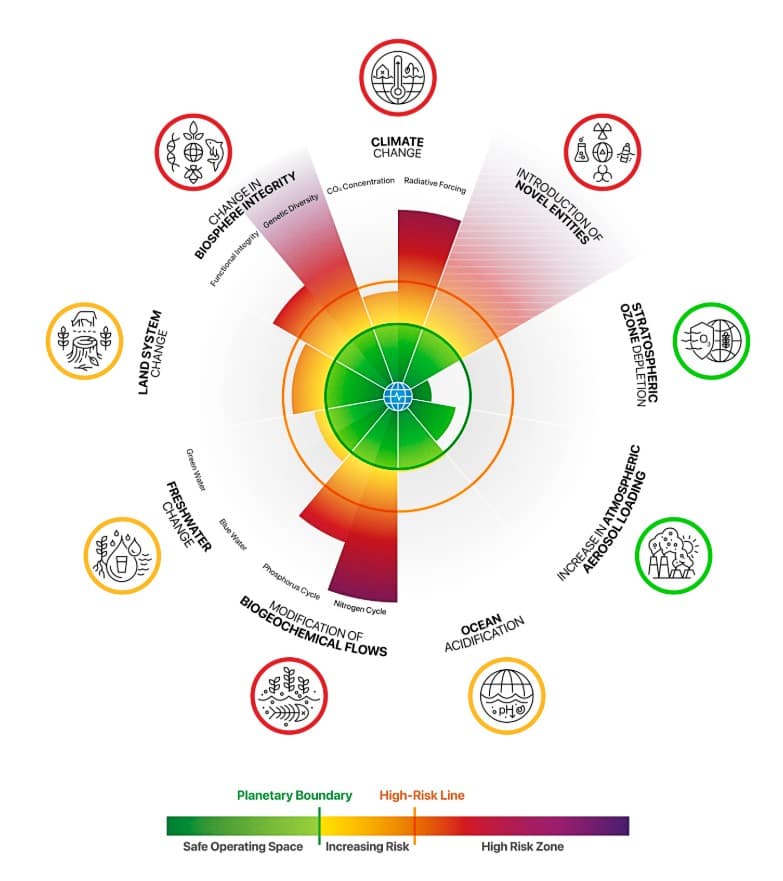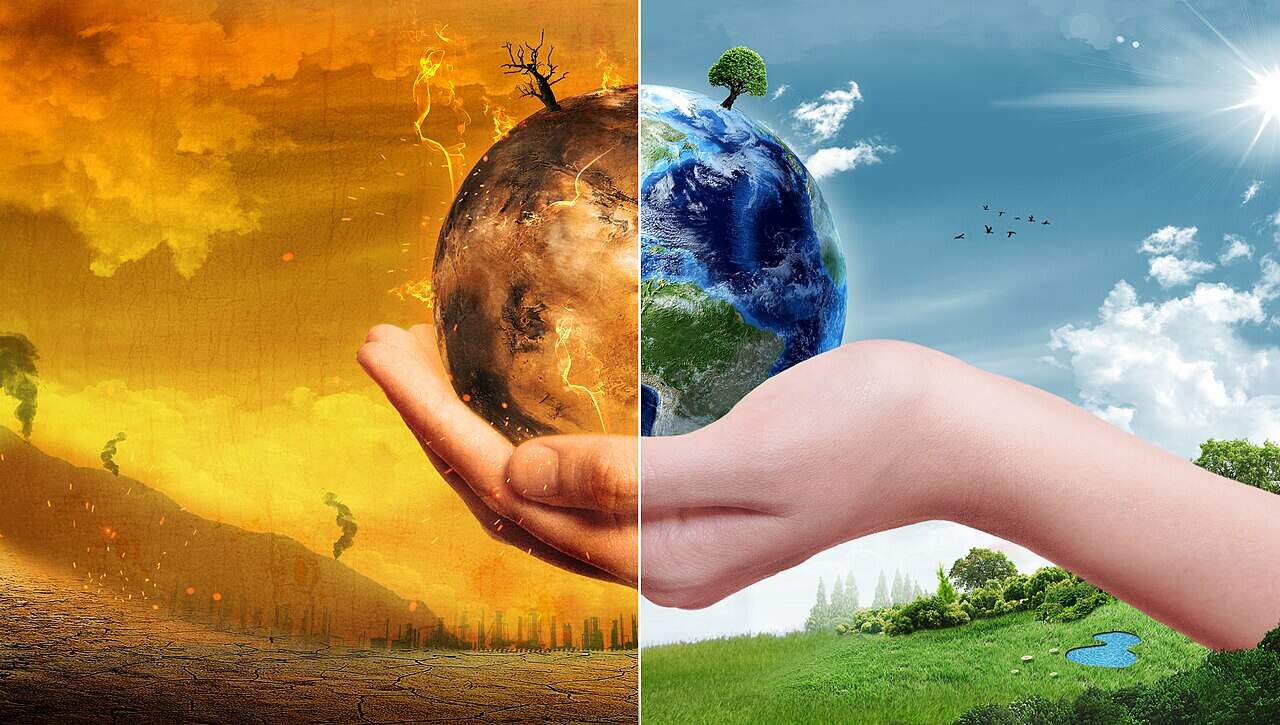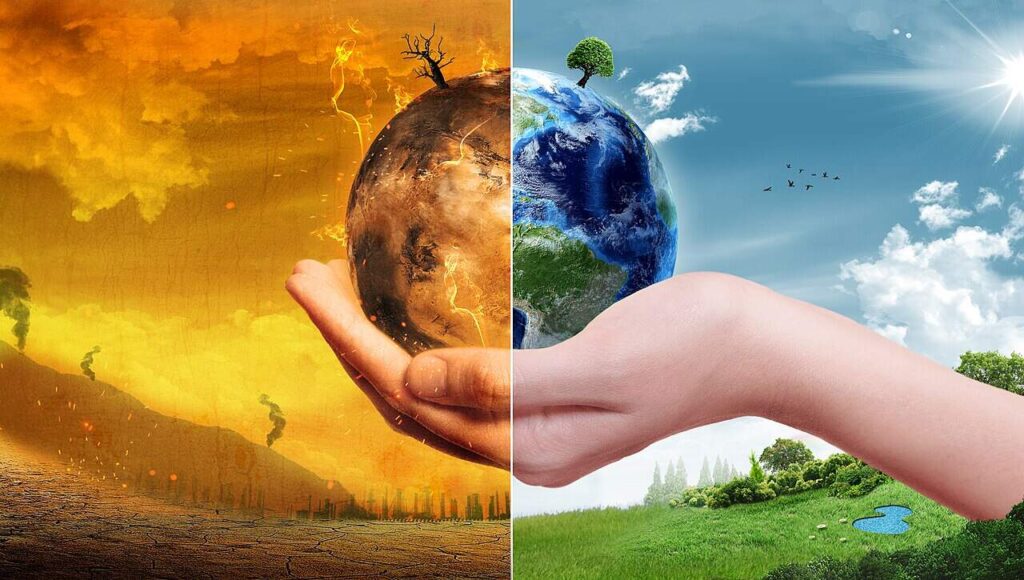For thousands of years, Earth operated within a stable, forgiving range of conditions that allowed human civilizations to flourish. That stability might soon be a thing of the past.
A new scientific assessment reveals that humanity has pushed seven of nine critical planetary boundaries past their safe limits, entering a danger zone where the risk of triggering irreversible, large-scale environmental damage is rapidly increasing. The health of the planet, the report concludes, is deteriorating.
“More than three-quarters of the Earth’s support systems are not in the safe zone,” said Johan Rockström, director of the Potsdam Institute for Climate Impact Research (PIK) in Germany and a co-author of the report. “Humanity is pushing beyond the limits of a safe operating space, increasing the risk of destabilizing the planet.”
The 2025 Planetary Health Check, produced by PIK’s Planetary Boundaries Science Lab, adds a grim new milestone: for the first time, ocean acidification has joined the list of breached boundaries. It now stands alongside climate change, biosphere integrity, land system change, freshwater change, biogeochemical flows, and the introduction of novel entities like plastics and synthetic chemicals.
Only two processes remain within safe limits: the stratospheric ozone layer and atmospheric aerosol loading.
The Ocean’s Crisis
The oceans have long acted as a buffer against the worst of human excess, absorbing both heat and vast quantities of carbon dioxide. That service has come at a cost.
The new report confirms that the ocean acidification boundary has been transgressed. As the ocean absorbs CO₂ from burning fossil fuels, its chemistry changes, becoming more acidic. Since the Industrial Revolution, the ocean’s surface pH has dropped by 0.1. This seemingly small number represents a roughly 30% increase in acidity.
This shift is pushing marine ecosystems beyond safe limits. The consequences are already visible.
Tiny sea snails known as pteropods, a crucial food source for many fish, are showing signs of shell damage. Cold-water corals and Arctic marine life are especially vulnerable. The degradation ripples outward, threatening fisheries and the billions of people who depend on them.
“The movement we’re seeing is absolutely headed in the wrong direction,” said Levke Caesar, a co-lead of the Planetary Boundaries Science Lab and a lead author of the report. “The ocean is becoming more acidic, oxygen levels are dropping, and marine heatwaves are increasing. This is ramping up pressure on a system vital to stabilizing conditions on planet Earth.”
Oceanographer Sylvia Earle, a member of the advocacy group Planetary Guardians, called acidification a “flashing red warning light on the dashboard of Earth’s stability.” She stated, “Ignore it, and we risk collapsing the very foundation of our living world.”
A Planet Under Mounting Pressure
 The current state of the Planetary Boundaries. Credit: PIK 2025
The current state of the Planetary Boundaries. Credit: PIK 2025
The planetary boundaries framework functions like a planetary medical chart. Just as a doctor tracks blood pressure and cholesterol, scientists track nine Earth system processes—from the stability of the climate to the health of the biosphere—that are crucial for maintaining the conditions of the Holocene, the stable geological epoch that began about 10,000 years ago.
Crossing a boundary does not spell immediate doom, but it significantly raises the risk of triggering catastrophic tipping points, such as the collapse of the Greenland ice sheet or the dieback of the Amazon rainforest.
“It’s like blood pressure,” Katherine Richardson, an earth systems scientist at the University of Copenhagen who led a major 2023 update to the boundaries, told Scientific American. “If your blood pressure is over 120 over 80, it’s not a guarantee that you’re going to have a heart attack, but it does raise the risk.”
The 2025 report shows that for all seven of the breached boundaries, the pressure is increasing. The trends point toward further deterioration.
The climate change boundary, measured by CO₂ concentration and radiative forcing, is deep in the danger zone. Atmospheric CO₂ is now at 423 parts per million, far above the safe limit of 350 ppm. The extinction rate is at least 10 times higher than the safe boundary. The overuse of nitrogen and phosphorus fertilizers continues to pollute land and water, creating dead zones.
The report also highlights how these crises are interconnected. Climate change intensifies biodiversity loss. Deforestation triggers more severe droughts. Pollution weakens the ocean’s ability to absorb carbon.
“The interconnections between the planetary boundaries show how a planet under pressure both locally and globally can impact everyone, everywhere,” said Boris Sakschewski, another co-lead of the lab and report author.
A Closing Window for Action
Despite the dire diagnosis, the report offers a sliver of hope by pointing to past successes. The recovery of the ozone layer, thanks to the global Montreal Protocol, and the improving trend in global aerosol pollution, prove that concerted international action can work.
“We are witnessing widespread decline in the health of our planet. But this is not an inevitable outcome,” Rockström said. “The drop in aerosol pollution and healing of the ozone layer, shows that it is possible to turn the direction of global development.”
Certain global leaders also share this sentiment. “We are facing a planetary emergency,” said former Colombian President JM Santos. “The breach of the Ocean Acidification boundary is a stark scientific warning and a moral call to action.”
The challenge is now one of scale and speed. The report concludes that Earth’s overall health is at the upper end of the “zone of increasing risk,” pushing closer to a “high-risk zone” where irreversible changes become more likely. The planet’s inherent resilience is still keeping the window open for a return to a safe operating space.
But that window, the scientists warn, is closing fast.


